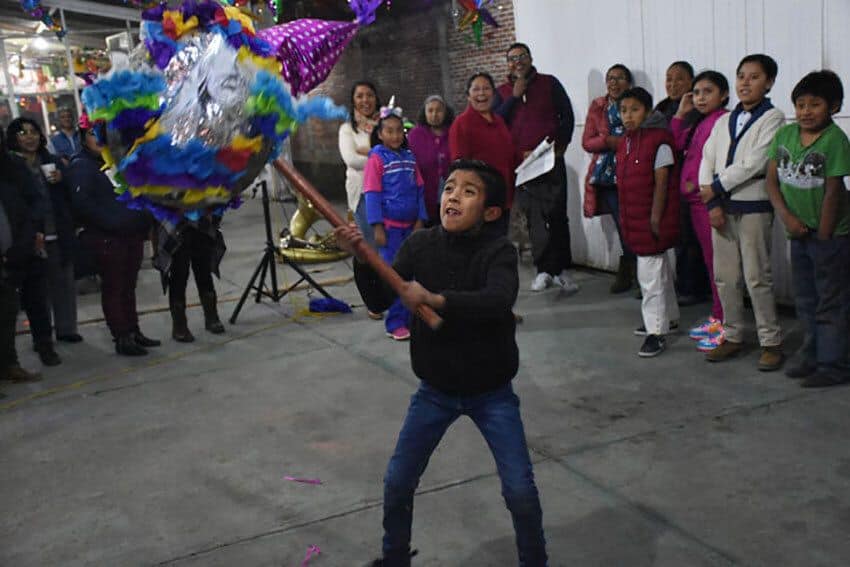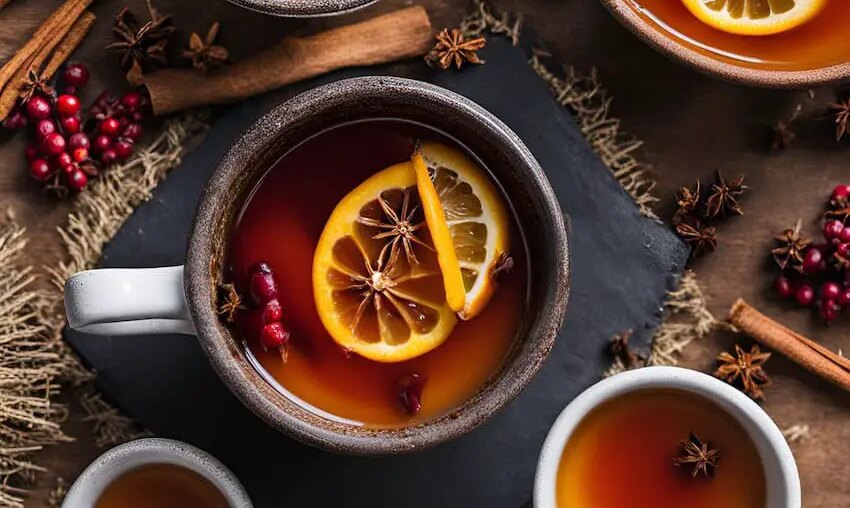Smell and taste are senses with an incredible ability to transport us back to specific places, people and moments in our lives. One scent that invokes this for me is the aroma of ponche. Ponche gives me my “Ratatouille” moment, bringing back memories of my grandparents, my childhood, the posadas we went to and the carols we sang. I’ve worked hard to forget the period of my life when I was controlled by a rat, though. We don’t talk about that anymore.
I can vividly recall the look of fright on my grandmother’s face when we, her grandchildren, rocked one of her very special Baby Jesus figures that she had purchased during one of her many exotic Catholic pilgrimages. Of course, I also remember the excitement of breaking the piñata with the help of someone stronger — my dad. Perhaps this is why this time of year is my favorite.
Posadas 101


In pre-Hispanic times, the Mexica held celebrations during the winter solstice in honor of Huitzilopochtli, the god of war. These festivities included offerings, ceremonies, bonfires and various activities encouraging community participation.
During the colonial era in Mexico, priests became concerned when they noticed that Indigenous people were reluctant to enter churches, as they believed it was a serious act of disrespect to step into the house of any deity. In a stroke of creative genius, the priests organized theatrical performances reenacting the pilgrimage of the Virgin Mary and Joseph before the birth of Jesus outside the churches, introducing some elements of the festivities they already did for other deities. This innovation led to the traditions of posadas and pastorelas.
At the end of these performances, a piñata would make an appearance. Originally, piñatas were shaped not like a donkey, but a star symbolizing the Star of Bethlehem. Its seven points represented the seven deadly sins. Breaking the piñata symbolized the struggle against evil, while the rewards that came from it represented the blessings of conquering sin.
In modern times, after the posadas and pastorelas, tamales, ponche, atole and buñuelos are served. For a charming depiction, watch Disney’s “The Three Caballeros.” It is the most beautifully illustrated and romanticized explanation of what posadas are in Mexico.
Ponche
Legend has it that Mexican ponche is an adaptation of India’s panch, introduced by the Spanish. Lacking the original five ingredients — alcohol, sugar, water, lemon and tea — the Spanish improvised using a mix of local and Asian ingredients brought through trade: sugarcane, prunes, hibiscus, apples, cinnamon, guava, tejocote, tamarind and piloncillo.
So ponche became a simple and affordable drink, full of flavor and meant to be shared with loved ones par excellence during this season.
Tejocote
A ponche without tejocote isn’t truly complete. This fruit is 100 percent Mexican and has been used in pre-Columbian rituals, traditional remedies still prepared today and recipes passed down through generations.


In Nahuatl, the word tejocote translates to “sour stone,” which is fitting since raw tejocote is a small, hard fruit that resembles a tiny apple. It was historically used in offerings to various deities and as tribute. Over time, tejocote has become one of the essential fruits for the Día de Muertos altar, ensuring that the souls of children visit as well as for Christmas celebrations. While it may not hold any specific symbolic meaning, its wide availability and distinctive flavor make it a defining element of the Mexican festive season.
Entren Santos Peregrinos
This phrase — “enter, holy pilgrims” — originates from traditional Mexican carols and signifies the start of the celebration. To begin your own festivities, here’s a ponche recipe to ensure your celebration is authentically Mexican.
Ingredients
- 4 liters of water
- 500 g tejocotes, washed and stemless
- 500 g guavas, quartered
- 2 sections sugarcane, peeled and cut into sticks
- 2 red apples, diced
- 200 g prunes
- 200 g tamarind (optional, peeled)
- 1 cup dried hibiscus flowers
- 3 cinnamon sticks
- 5 cloves
- 2 star anise (optional)
- 500 g piloncillo (or sugar to taste)
- 1 cup brown sugar (adjust to taste)
- Cinnamon sticks for garnish
- Optional: 1 cup rum or brandy for a festive touch
Instructions
- In a large pot, bring the water to a boil with cinnamon sticks, cloves and star anise to create an aromatic base.
- Cook the tougher fruits. Add the tejocotes and boil for 10 minutes until soft. Remove, peel and deseed if desired. Add the sugarcane and tamarind, cooking for an additional 5 minutes.
- Add the remaining fruits. Stir in guavas, apples, prunes and hibiscus flowers. Simmer on low heat for 20 minutes, stirring occasionally.
- Sweeten the ponche. Add the piloncillo in chunks and brown sugar. Stir until completely dissolved. Adjust sweetness to taste by adding more sugar if necessary.
- Cook for another 10 minutes to blend flavors. Turn off the heat and let it sit for 10–15 minutes.
- Serve hot, ladling the ponche into cups. Make sure each serving includes fruit and a piece of sugarcane. Add a splash of rum or brandy if desired.
- Pro tip: Slow cooking enhances the flavors. Leftovers can be refrigerated and reheated the next day— the flavors will be even better!
Enjoy with tamales, buñuelos, “The Three Caballeros,” Mexico News Daily and most importantly, your loved ones.
María Meléndez is a Mexico City food blogger and influencer.

